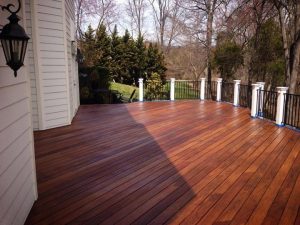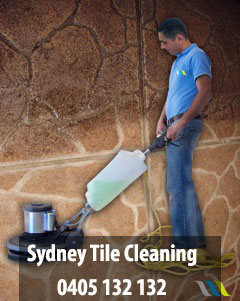
Cleaning,Waxing and Polishing Wood Flooring
Sydney Cleaning Cleaning – Sealing – Restoration Call Us For More Info Call Us For More Info 0405 132 132 Need support? Need support? info@sydneytilecleaning.com.au
Cleaning – Sealing – Restoration

routing outdoor tile on a concrete patio slab is a lot like grouting interior tile, with a few key differences. First, the grout must be rated for outdoor applications. Second, some of the grout lines should be filled with caulk rather than grout, to create expansion joints that allow the tile to expand and contract with temperature changes. And third, outdoor grout must be applied and fully cured in dry weather within the grout’s specified temperature range. If rain is expected, you may need to tent the area to keep the grout dry while it cures (sometimes for several days).
There are two basic types of grout that are suitable for outdoor use and are relatively DIY-friendly: standard cement-based grout and pre-mixed grout. Again, both types must be rated for outdoor use.
Cement-based grout is a dry powder that you mix with water (or a liquid additive) prior to application. Most outdoor applications call for a sanded grout, which is used for grout joints 1/8 inch or wider (for smaller joints, you can use unsanded grout). Cement-based grout used outdoors must be rated for “no efflorescence” to ensure that the grout won’t effloresce or lose moisture and develop a chalky white residue. Cement-based grouts also should be sealed periodically for weather- and stain-resistance.
Pre-mixed grout is made with a polymer, such as acrylic, and does not contain cement. It is sold in tubs and is simply applied right out of the container without mixing. Pre-mixed grouts tend to be more flexible than cement grouts, which may help resist cracking in adverse conditions. But perhaps the best advantage of pre-mixed grout is that it does not need to be sealed.
Plan your grouting project for good weather, and be prepared to cover any exposed areas, if necessary. Both cement-based and pre-mixed grouts typically must be applied when the air and tile surface temperatures are at least 50 degrees and no more than 90 or 100 degrees Fahrenheit. Both also need about 72 hours for the initial cure and may need up to seven days to cure fully. During this time, the tile area must be fully protected from the rain. Rain protection must allow for adequate airflow to ensure proper curing. Grout sealer also must remain dry as it cures.
Working Time: 2 hours
Total Time: Up to 8 days; more if sealing grout
Material Cost: Between $60 and $80
Use a utility knife to carefully scrape out any thinset mortar (the tile adhesive that you used to bond the tiles to the concrete slab) that may have squeezed out between the tiles when you set them. The thinset is a different color than the grout and can show through if it is not removed. Clean the surfaces of the tiles with a damp sponge.
Fill the grout joints that you have designated as expansion joints with a commercial silicone caulk or other flexible outdoor sealant designed for this application. Smooth the caulked joints with your finger so they will look like filled grout lines. Let the caulk cure overnight or as directed.
Mix cement-based grout in a bucket with water or a liquid additive, following the manufacturer’s directions. Mix the grout thoroughly with a drill and mixing paddle, mixing only as much grout as you can use within the working time of the product. Let the grout sit, or “slake,” for a few minutes, if directed by the mixing instructions. If you’re using pre-mixed grout, simply open the grout container; you do not need to mix or otherwise prepare the grout. However, you may need to moisten the tile surfaces with a damp sponge.
Plan to work in small areas, such as 3 by 3 feet, at a time. Scoop up some grout with a grout float and drop it onto the tile surface. Spread the grout over the tile faces and grout joints, holding the float at a 45-degree angle to the tile faces and moving it diagonally across the joints. Use the float to force the grout into the joints, making multiple passes from different diagonal directions.
Hold the float nearly vertical (at 90 degrees) to the tile and scrape off excess grout from the tile faces, again moving diagonally across the tiles and grout joints. Moving parallel to the joints can pull out grout from the joints. Scrape the float against the edge of the bucket or container to clean the float as you work (you can use the removed grout on other tiles).
Fill a bucket with clean water. Wait the recommended amount of time (this varies by product), then wipe the tiles with a barely damp grout sponge (do not use a regular cleaning sponge) to clean the tile faces and smooth the grout joints. Make sure the sponge is just moist, not wet. The goal is to gently wipe the tiles clean while being careful not to remove grout from the joints. Don’t worry about getting them perfect at this point; you will be wiping them again soon. Rinse the sponge frequently as you work.
Repeat the same process to fill the grout joints and wipe the tiles in each small area over the entire tile installation.
Give all the tiles another wipe-down with a barely damp sponge. Rinse the sponge after every swipe to get the tile faces as clean as possible.
Let the grout set as directed, then buff the tiles with a microfiber cloth to remove the grout haze from the tile faces. You do not need to buff the grout joints. Allow the grout to cure fully, as directed by the manufacturer.
Seal the grout with an outdoor-rated grout sealer, using a sponge paintbrush or other applicator. You do not need to seal most pre-mixed grouts, but this may be an option. Let the grout sealer cure fully, as directed.
One of the main challenges beginners face when grouting is the working time of the grout, or the amount of time you have before the grout starts to harden. If the weather is over 80 degrees F and/or there is direct sun hitting the tile, the grout may set up more quickly than the product’s standard working time. For this reason, it’s best to grout when the sun is not hitting the tile. If the weather is hot, start grouting in a very small area to get a feel for the actual working time before grouting over larger areas.

Tile Cleaning Sydney is Australia’s leading tile care specialist. We are your specialist service provider for all tile & grout cleaning, tile sealing, tile stripping & sealing, tile re-grouting, grout colour sealing, and outdoor tile cleaning. If you need advice on cleaning & sealing your old or brand new floors or need a professional to do it for you, then you have come to the right place.
If You Need Professional Outdoor Tile Grout – Feel free to call 0405 132 132 or use the online enquiry form for an appointment or to get a free quote.

Sydney Cleaning Cleaning – Sealing – Restoration Call Us For More Info Call Us For More Info 0405 132 132 Need support? Need support? info@sydneytilecleaning.com.au

Sydney Cleaning Cleaning – Sealing – Restoration Call Us For More Info Call Us For More Info 0405 132 132 Need support? Need support? info@sydneytilecleaning.com.au

Sydney Cleaning Cleaning – Sealing – Restoration Call Us For More Info Call Us For More Info 0405 132 132 Need support? Need support? info@sydneytilecleaning.com.au

Sydney Cleaning Cleaning – Sealing – Restoration Call Us For More Info Call Us For More Info 0405 132 132 Need support? Need support? info@sydneytilecleaning.com.au
Phone: 0405 132 132
Email: info@sydneytilecleaning.com.au
Copyright © 2019. Sydney Tile Cleaning. Designed by: iFocal